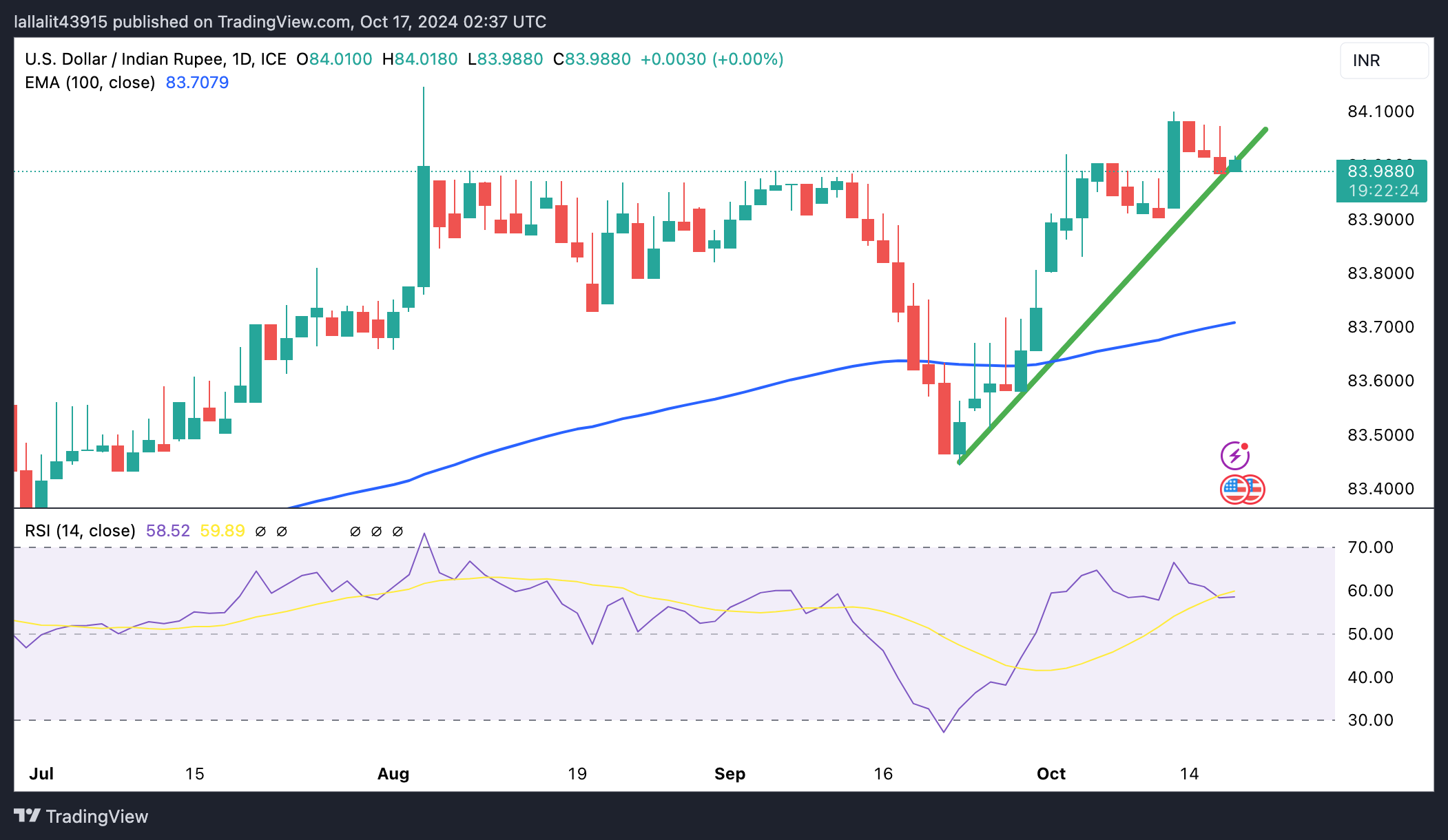USD/INR trades with mild gains as traders brace for US Retail Sales data

- The Indian Rupee softens in Thursday’s early European session.
- The continued selling of domestic equities by foreign portfolio investors weighs on the INR.
- The US September Retail Sales will be the highlight on Thursday.
The Indian Rupee (INR) trades with mild losses on the stronger US Dollar (USD) on Thursday. The significant outflows from Indian equities and USD demand from foreign banks and importers exert some selling pressure on the local currency.
However, the decline in crude oil prices amid easing fears over supply disruption in the Middle East might support the INR as India is the world’s third-largest oil consumer. Additionally, the routine foreign exchange interventions by the Reserve Bank of India (RBI) could cap the downside for the Indian Rupee.
Traders will keep an eye on the US Retail Sales data for September, which is due later on Thursday. Also, the US weekly Initial Jobless Claims, Industrial Production and Philadelphia Fed Manufacturing Survey will be released.
Daily Digest Market Movers: Indian Rupee remains weak amid foreign fund outflows
- India’s trade deficit stood at $20.78 billion in September from $29.65 billion in August, according to data released by the commerce ministry on Wednesday.
- India’s Exports rose marginally to 34.58 billion in September from 34.41 in the year-ago period. Meanwhile, Imports declined to 55.36 billion in September versus 64.36 billion prior.
- Foreign funds withdrew more than $7 billion from Indian equities in the month through October 14, the largest in over four years, according to Bloomberg.
- The US Retail Sales is estimated to rise to 0.3% in September from 0.1% in the previous reading.
- According to the CME FedWatch tool, traders have priced in a nearly 94% chance of a 25 basis points (bps) Fed rate cut in November.
Technical Analysis: USD/INR’s positive outlook remains intact
The Indian Rupee trades in negative territory on the day. Technically, the USD/INR pair keeps the bullish vibe as the price holds above the ascending trend line and the key 100-day Exponential Moving Average (EMA) on the daily chart. The upward momentum is supported by the 14-day Relative Strength Index (RSI), which is located above the midline near 58.80, hinting that the uptrend is more likely to gain traction than reverse.
Sustained trading above the all-time high of 84.15 could expose the pair to a possible move up to 84.50. Further north, the next upside barrier to watch is the 85.00 psychological level.
Bearish candlesticks below the rising trend line could lead to 83.90, the low of October 10. A breach of the mentioned level could pave the way to 83.70, the 100-day EMA. The next contention level is seen at 83.00, representing the round mark and the low of May 24.
RBI FAQs
The role of the Reserve Bank of India (RBI), in its own words, is “..to maintain price stability while keeping in mind the objective of growth.” This involves maintaining the inflation rate at a stable 4% level primarily using the tool of interest rates. The RBI also maintains the exchange rate at a level that will not cause excess volatility and problems for exporters and importers, since India’s economy is heavily reliant on foreign trade, especially Oil.
The RBI formally meets at six bi-monthly meetings a year to discuss its monetary policy and, if necessary, adjust interest rates. When inflation is too high (above its 4% target), the RBI will normally raise interest rates to deter borrowing and spending, which can support the Rupee (INR). If inflation falls too far below target, the RBI might cut rates to encourage more lending, which can be negative for INR.
Due to the importance of trade to the economy, the Reserve Bank of India (RBI) actively intervenes in FX markets to maintain the exchange rate within a limited range. It does this to ensure Indian importers and exporters are not exposed to unnecessary currency risk during periods of FX volatility. The RBI buys and sells Rupees in the spot market at key levels, and uses derivatives to hedge its positions.
